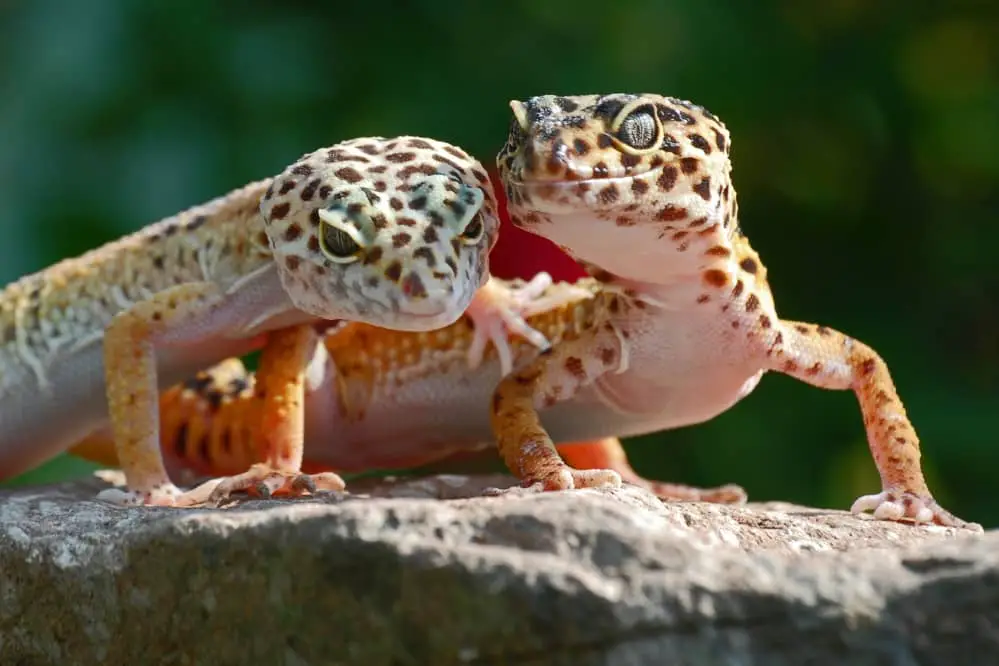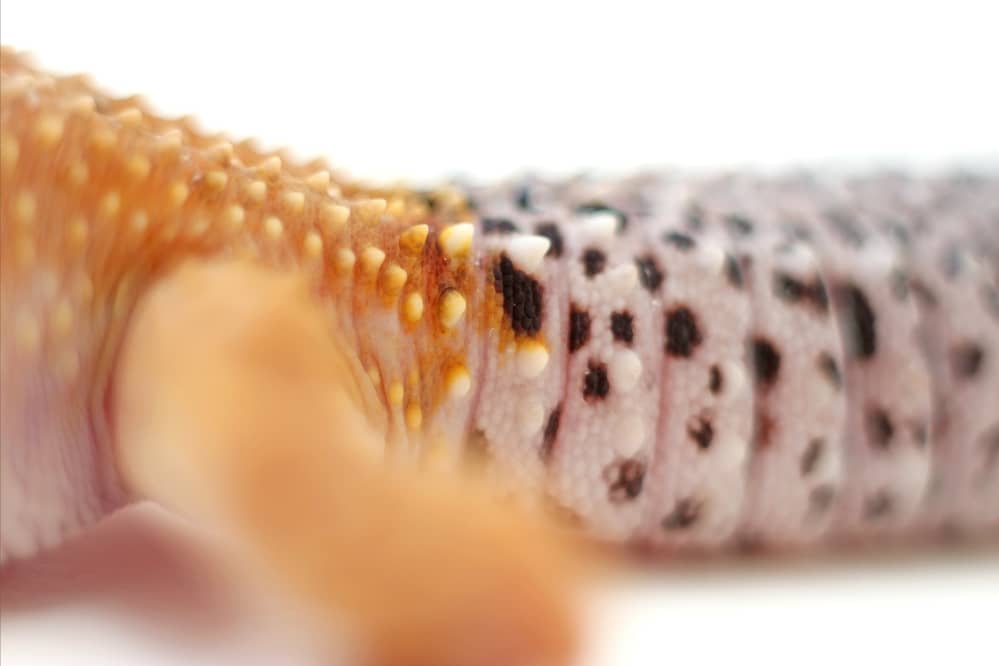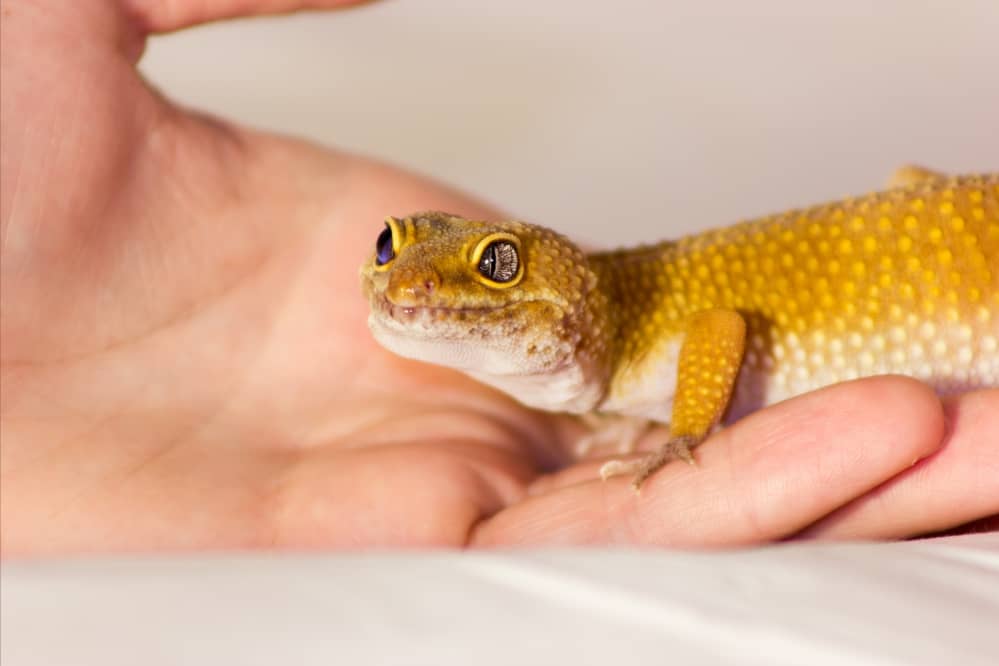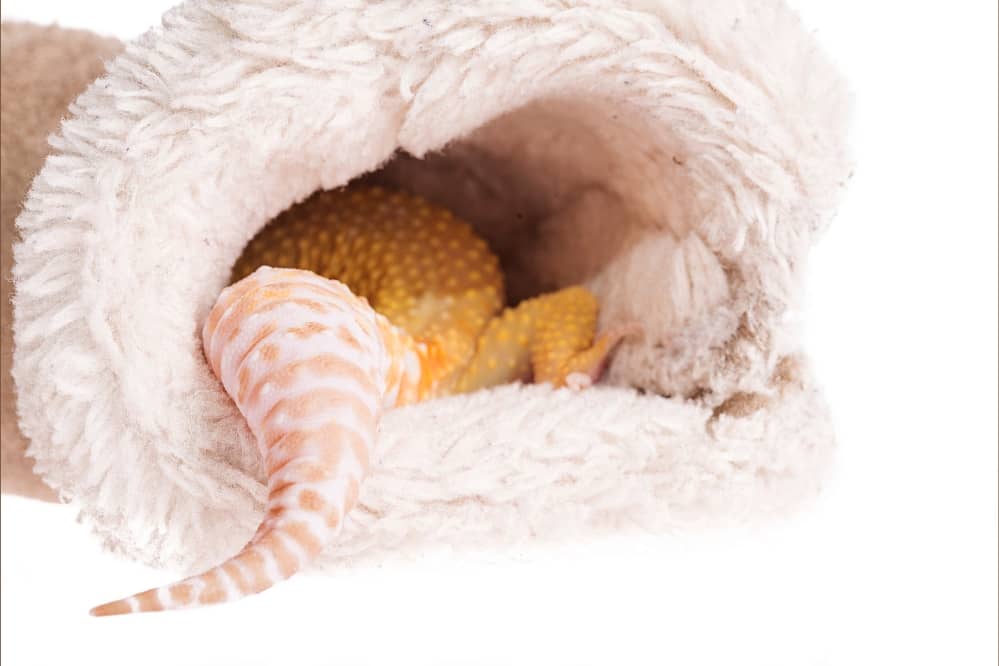The magnificent tails of leopard geckos perform several critical functions. The leopard gecko’s tail reveals much of its body language. The tail reveals everything from a warning to an indication of hostility, excitement, or an impending attack.
Leopard Geckos use their wagging tails to communicate and show their emotions. The primary causes for leopard gecko tail wagging include aggression, courtship, excitement, defensiveness, and competition.
Why is your Leopard Gecko wagging its tail?
First-time gecko owners are frequently astonished to see their Leopard Geckos waving their tails for the first time. Examining Leo’s behavior and how it wags its tail can provide valuable insight into its emotions.
The majority of the body language of Leopard Geckos is expressed through the tail. How quickly or slowly the tail wags and Leo’s posture while wagging are accurate indicators of their emotions and the message they are attempting to convey.
Reasons for tail-wagging in Leopard Geckos
In Leopard Geckos, a wagging tail typically indicates hostility or excitement. It is also usual to wag their tails as a form of defense or to warn others. Described and detailed below are the primary tail-wagging habits of leopard gecko.
1. Rapid tail movement
If you observe a leopard gecko wagging or vibrating its tail fast, check to determine if it is in the company of female leopard geckos.
Although both male and female leopard gecko can wag their tails quickly and vigorously, the male will only do so during courtship to demonstrate their interest in the female. Tail wagging alerts females to the presence of a male Leo and can continue throughout courtship and mating.

It is usual for novice gecko owners to be perplexed when they observe what appear to be females waving their tails during mating, only to discover later that the apparent ladies were males competing for female attention. Female Leopard Gecko tail-wagging males are also observed. This is typically a protective stance intended to show apprehension about the approaching male leopard gecko.
Several Leopard Gecko owners have compared the male’s mating tail swinging to that of a rattlesnake, in which the tail’s tip rattles and shakes. This is typically noticed in males between January and September during the mating season.
2. Slowly waving tail
Younger leopard gecko slow tail wagging can signify joy or, conversely, a method of announcing their presence to other leopard geckos.
Leopard Geckos that wish to draw attention to themselves may place their bellies lower to the ground while slowly wagging their tails. This is an intentional wiggle and is also commonly observed when a new leopard gecko is introduced to a group of geckos. Typically, they use the wag to determine their thoughts about the new residents.
3. Excitement
Juvenile Leopard Geckos are typically more agitated, especially when feeding or hunting. These younger ones will slowly wag their tails in delight. When hunting, the tail wag will begin slowly and rise in pace before launching at the target.
Even though this tail-wagging activity is more typical in younger leopard geckos, it has occasionally been reported in adult leopard geckos. Typically, this is more evident when hunting for their preferred meal. The slow wagging of a leopard gecko’s tail suggests that it is healthy and alert.
4. Wag of the tail in defense
As the term suggests, defensive tail wagging is wagging the tail to distract an assailant, bully, or opponent. This tail wagging is uncomfortable for leopard gecko, and if this defensiveness persists, it can cause the tail to drop, damaging leopard gecko’s fat reserves and overall health.
The leopard geckos’ strategy to distract their foes with tail wagging is defensive tail-wagging. Generally, wagging is a leisurely, back-and-forth motion accompanied by walking or standing on tiptoes. This encourages the assailant to focus on leopard gecko tail rather than their body, allowing leopard gecko to flee safely.
Leopard Geckos typically drop their bellies to the ground and raise their heads when displaying defensive behavior. In this elevated position, leopard gecko will be able to intimidate their opponents more effectively.
Dropping of Tail in Leopard Gecko
As was previously mentioned, leopard geckos will shed their tails in times of extreme stress or danger. This is a potentially life-saving strategy in which leopard gecko’s writhing disconnected tail serves as a diversion for his escape.

However, tail loss has repercussions, denying leopard gecko with vital energy reserves. It will take several months for leopard gecko’s tail to regenerate, but with regular feeding and a reduction in stress, his tail and health will return to normal. Leopard Geckos have been observed consuming their tails to replenish lost fat reserves.
Suppose you observe a leopard gecko slowly waving its tail at another gecko, and you determine that this behavior is defensive. In this instance, urgent separation is recommended. Early recognition of the habit can prevent severe harm to your leopard geckos.
Helping your Leo following the tail loss
It is usual for tail to fall, so there’s no need to be alarmed. Leopard gecko will be agitated when their tail detaches and will want up to an hour to unwind in peace.
If leopard gecko shares an enclosure with other geckos, it would be better to remove or isolate him temporarily. Remove any substance that could become embedded in the wound and cause an infection. Once it has calmed down, you can disinfect the tail with a cotton swab and disinfectant.
Leopard Geckos do not drop their tails frequently and only in extreme circumstances. It takes much time and effort to regenerate a tail. Therefore it is the last resort for leopard gecko.
Reducing stress and tail loss
Continued defensive tail-wagging should raise red flags and encourage you to determine the source of leopard gecko’s anxiety. Examine leopard gecko’s habitat inside and outside the enclosure, and make adjustments to alleviate unneeded stress.

You do not want stress levels to increase or persist since this could result in tail-dropping, injury, or health problems. Monitor the enclosure environment, house Leo with geckos of comparable size, do not house more than one male gecko and regulate external variables such as lights, sounds, and dogs.
Stress and tail-dropping can be readily prevented if leopard gecko’s behavior is regularly monitored and fast corrective action is done.
Conclusion
While tail wagging in leopard Geckos is fascinating, it can also give gecko owners valuable information about Leo’s emotions and current state. Unless a result of stress or aggressive behavior, tail wagging is usually harmless. Knowing the indications and what Leo is attempting to express might assist you in determining whether action is necessary.

